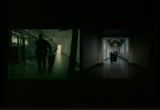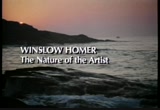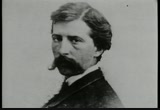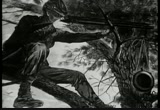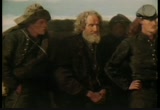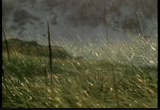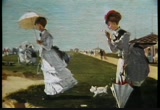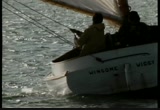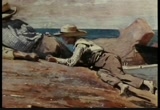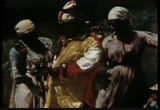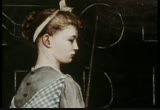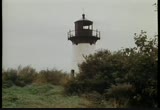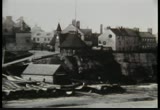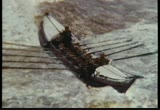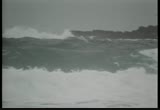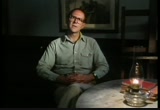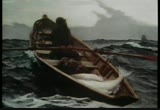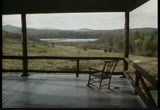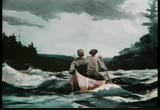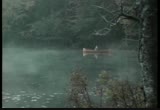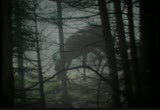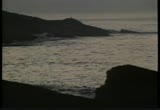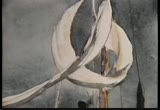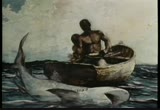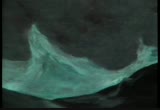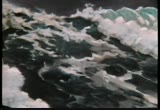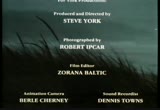tv Deutsche Welle Journal LINKTV December 4, 2012 11:00am-11:30am PST
11:00 am
11:01 am
in a letter to his brother, winslow homer said of his surroundings, "there is certainly some strange power "that has an overlook on me, directing my life. "that i am in the right place, there is no doubt. "i have found something interesting to work at and time to do it." for almost three decades, winslow homer made his home on prouts neck, a rocky point just south of portland, maine. his house still stands on the high ground overlooking the sea. visiting the place where homer lived and worked is john wilmerding, deputy director of the national gallery of art. homer's studio was a remodeled stable
11:02 am
set about 200 yards from a large summerhouse thatis older brother bought in 1883. although homer was close to his family, he enjoyed the solitude his studio provided, but most of all, it was the ocean outside which reall made this place so important to him. the love of nature was very much a part of homer's time. his family joined the growing number of americans in the late 19th century who could afford to escape the city heat and spend summers at the shore. homer's relatives on both sides had been engaged in shipping and trading for generations. his father, charles savage homer, carried on an import business. his mother, henrietta benson homer, was a watercolorist whose flower pictures were occasionally shown in professional exhibitions.
11:03 am
winslow was born in boston in 1836. at t age of 21, after two years of drudgery apprenticed to a commercial lithographer, he vowed he would never have another master and set up his studio at 22 winter street, in a building with publisher m.m. ballou. true to his new england background, homer was forthright and self-reliant. above all, he valued his independence, soon establishing himself as a free-lance illustrator for ballou's pictorial. homer's first important illustration was published in 1857, and within a year, his work began to appear in harper's weekly. his early pictures recorded the ordinary manners and pleasures of american life, reflecting a mood of national self-confidence prior to the civil war. his sketch of the skating pond in central park
11:04 am
was published by harper's in january 1860, shortly after homer had moved to new york city. in new york, homer took a few lessons in painting from frederic rondel. rondel was a rather sentimental landscape painter who had little influence on homer's style beyond his technical instruction in the use of oils. when the civil war began, harper's commissioned the artist to depict life at the front. rovi behind the lines with the potomac army, homer produced a series of closelybserved studies of camp life. homer's paintings of this period have an anecdotal or literary quality in keeping with the traditions of magazine illustration, but he also places new emphasis on pictorial design and the purely visual character of a scene-- qualities typical of the photographs of mathew brady and others.
11:05 am
like the photographers of the civil war, whose equipment made action scenes impossible, homer preferred static group formations, and yet the feeling of directness in recording the ordinary lends to his work a special force. prisoners from the front, with its profound sense of the resignation, exhaustion, and human cost of war, evoked the admiration of both critics and the public and brought homer his first recognition as an artist. paris, december 1866. homer arrived for an extended visit and to see prisoners from the front and another of his civil war paintings that had been selected for showing at the universal exsition. enjoying the celrity of an artist whose work was well-received,
11:06 am
he made the trip profit drawing parisian enes for harper's. homer must have been intrigued by the changes underway in french art and by what he saw in the galleries. with friends, he made several excursions into the countryside near paris, where he developed an eye for the light that would soon appear in his own paintings. after 11 months, he was ready to return to america. he had gone to france as an illustrator, but he came home determined to be an artist. through his friends, homer was probably also introduced to the work of barbizon painters and other contemporary french artists, such as manet, whose work, in all likelihood, homer would have sought out while in paris. after his return from france, homer's subjects and the style of his work make clear he absorbed something from french art.
11:07 am
return of the gleaner is strongly reminiscent of millet's well-known paintings. the lighter palette and two-dimensional design of homer's work at this point suggest that he may have seen manet's paintings with their strong light and flat patterns. homer's oil paintings of domestic american scenes called forth his deeper creative energies, but magazine illustrations of the same everyday activities provided his livelihood. the carefree quality of these scenes appealed to a country
11:08 am
recovering from the civil war. americans turned to lighter concerns-- exalting the innocence of childhood, the therapy of the outdoors, the benefits of leisure. throughout his life, homer made seasonal excursions, especially to the shore in summer, to seek subjects for his illustrations and to pursue his painting. at the age of 37, he was at the exact midpoint of his life. acutely aware that his youth was behind him, he was bored by the life of an illustrator, which he called a treadmill existence. in 1873, homer spent his summer in gloucter, massachusetts. there began his first serious use of watercolors.
11:09 am
among homer's contributions to american art, perhaps the greatest was his transformation of this medium from its limited use for colored drawings to an art form expressive in its own right. homer's gloucester scenes of children and outdoor life were a continuation of his earlier subjects. in t spring of 1875, he sent 27 watercolors-- mostly from gloucester-- to the american watercolor society's annual exhibition. 10 were sold. homer's pictures both pleased and exasperated the critics. the writer henry james called them the most striking pictures in the exhibition but scoffed at the commonplace subject matter. other reviewers criticized them as unfinished sketches. soon after the exhibition closed,
11:10 am
homer suddenly abandoned his commercial illustrations. although encouraged by the success of his watercolors, he was annoyed by critics, who for years had referred to him as a promising young artist. he told a friend, "i'm tired of it." resuming his pattern of travel in searc ofew subjects, homer went to petersburg, virginia, where he painted scenes in the black community. he began with nostalgic renditions of regional american ceremony and costume. gradually, he moved away from depictions of groups, concentrating instead on one or two figures, increasingly solid and sculptural in form. his single figures were studies in stillness, meditation, and introspection, including portraits of many young women
11:11 am
almost always seen in profile or with their eyes averted. one red-haired young woman appears repeatedly, suggesting that homer's interest in her was more than passing. he never married and never commented on this aspect of his life, but a friend recalled later that homer spoke of women in a remote tone, as of a subject matter which didn't personally interest him. during several visits to houghton farm in mountainville, new york, homer produced a flood of watercolors on pastoral themes, fashionable in late 19th-century america. he showed 23 of them at the watercolor society's 1879 exhibition. those who had complained of his sketchiness in earlier years were won over.
11:12 am
one critic wrote-- "never before has a collection of his works "been so beautiful in sentiment and evinced such a feeling of truth." homer returned to gloucester in 1880, after an absence of seven years. unlike his earlier visit when he lived in town, he boarded with the lighthouse keeper on ten pound island in the middle of gloucester harbor-- not only a physical separation, but a social one as well. homer began to turn inward. his need for privacy was strong. the island's freedom from intrusion was precisely what he wanted. homer's work in gloucester at this time was more spontaneous and fluid. his compositions became stronger and simpler.
11:13 am
in his few months of deliberate isolation on ten pound island, he experimented boldly, breaking through to a new language of light and color. when the summer was over, homer did not go on in his new mode. uncertain how to use the powerful new language he had discovered, he withdrew. boys playing around boats and girls in sunny meadows were no longer suitable subjects, yet his exrience provided him with nothing to take their place. on march 15, 1881, he sailed for england. [foghorn sounds] homer painted only one picture in london--
11:14 am
the houses of parliament from the south bank of the thames. cities never appealed to him, and they didn't now. finding neither subjects nor an artistic environment that suited him, he left london and traveled 275 miles to the north. he settled in the small fishing village of cullercoats on the north sea and rented a studio two houses from the rescue station, overlooking the beach. here was his first encounter with the wild and elemental forces of nature. the rhythm of life in cullercoats was determined by the fishing boats, which set out at dusk and returned in the morning.
11:15 am
gradually, homer began to replace descriptive detail with the concentrated drama of individuals bent on the task of survival in a rugged environment. although he had intended to stay in cullercoats only for the summer, he remained almost two years. in october, he watched the life brigade rescue the crew of a wrecked ship-- the iron crown. he sketched the scene from the beach and later painted one of his largest and most ambitious watercolors. at cullercoats, homer's works took on a new monumentality. in the lives of the fisherwomen, he perceived both the gravity of the human condition
11:16 am
11:17 am
homer returned to america in november 1882, having lived 20 months in the english fishing village. homer's brothers, charles and arthur, had houses on prouts neck, and the artist spent his first summer here in 1883. from that time on, this was to be his home, intimately associated with his life and art. homer deliberately placed his own studio apart-- on the cliffs looking out to sea-- and close to the elements he had encountered in the english fishing village. images of the sea and the theme of man's struggle against the forces of nature had become homer's central concern. the life line, acclaimed as a masterpiece when it was exhibited in 1884,
11:18 am
echoes the cullercoats watercolors. concentrating on major forms and subordinating details, homer strengthens the taut relationship between man and the sea. the anonymous figures are raised to a heroic level. he seems to be testing in his art combinations of representation and abstraction, of the immediate and the timeless. now the pattern of homer's life was settled. when the summer crod was gone, he was alone. his nearest neighbors were a few fisherman and local farmers. prouts neck provided him with that direct contact with nature he cared for most. it was wild, elemental, least touched by man.
11:19 am
in the adirondack mountains of new york state, homer had hunted and fished on vacations as early as 1870. in 1886, he and his brother charles joined the north woods club, a private hunting and fishing preserve whose members came mostly from the social clubs of new york and boston the adirondacks provided the same direccontact with nature that had attracted homer to prouts neck. a rustic cabin deep in the woods was the base for his explorations of man's relationship with the wild.
11:20 am
on visits that cbid sport and art, homeapparentnjoyed the coan es om but they do not appear in hisaiings. his subjects are local woodsmen, for whom the catch was food, not trophy. at a time when other artists meticulously rendered the details of outdoor life, homer was able to capture both action and atmosphere, earning him the special admiration of sporting enthusiasts. in many adirondack scenes, homer achieves his effects largely through the use of tonal washes, evoking a sense of man's harmony with nature.
11:21 am
scenes of serene beauty-- many of mink pond, near the artist's cabin-- contrast with other images of the woods, in which homer shows man as an intruder. deer hunting is a recurring theme-- the hunter often portrayed as a youthful adventurer accompanied on the trail by his dogs. the deer is vulnerable, even naive, unaware of the impending danger.
11:22 am
deer were driven from the woods by dogs. instinctively entering the water to get off the scent, the deer became an easy target for the waiting hunters. the splendor of the adirondacks gives increased poignancy to the unfolding drama. homer's water-color techniques were perfectly suited to the deeper, graver moods he wished to evoke in his adirondacks pictures. as if without effort, layers of transparent color create illusions of an explicit reality. the artist seems drawn to the paradox of death
11:23 am
as a source of intimacy with life. wherever he traveled, homer returned to maine-- to the prouts neck studio which was central to his life and work. the winters at prouts neck were extremely cold and desolate. although homer seemed to tolerate the bone-chilling weather-- often finding beauty in his bleak surroundings-- he began to make trips to nassau and florid during december and january. the first of these was in 1885 and later, in successive years from 1898 to 1904.
11:24 am
during the late 19th century, nassau had become a popular tourist resort. most visitors to the island spent their time at picturesque sites, but homer ignored the tourist life around him, concentrating instead on native activities, particularly sponge and turtle fishing. in these works, homer plays off the elements of dark-skinned fishermen, white sails, and green-blue water. working from bare, white paper to dark washes of color, he establishes vivid ranges of tonal contrasts. his brushwork is free and swift, rhythmic and expressive. certain subjects preoccupied homer for long periods.
11:25 am
hurricanes fascinated him. he dramatically illustrated the energy of the wind in a watercolor of 1898, and then, a year later, hauntingly portrayed the wreckage of a boat and figure washed ashore. another subject that occupied him was sharks. a watercolor of shark fishing was the basis for a pictorial narrative dealing with the ambiguous relationship between man and the forces of nature. this theme culminated in the great oil painting known as the gulf stream, seen on his easel at prouts neck. in deciding to be photographed next to this painting, homer chose to identify himself with his most memorable image of mortality. the gulf stream is surely as much about the belief in survival
11:26 am
11:27 am
115 Views
IN COLLECTIONS
LinkTV Television Archive
Television Archive  Television Archive News Search Service
Television Archive News Search Service 
Uploaded by TV Archive on

 Live Music Archive
Live Music Archive Librivox Free Audio
Librivox Free Audio Metropolitan Museum
Metropolitan Museum Cleveland Museum of Art
Cleveland Museum of Art Internet Arcade
Internet Arcade Console Living Room
Console Living Room Books to Borrow
Books to Borrow Open Library
Open Library TV News
TV News Understanding 9/11
Understanding 9/11